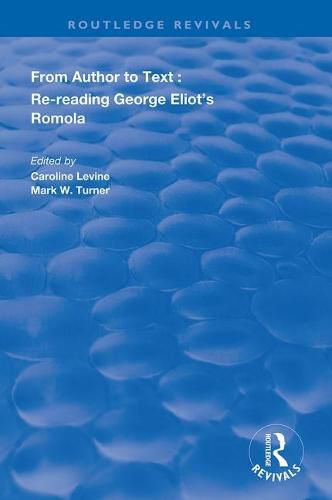Readings Newsletter
Become a Readings Member to make your shopping experience even easier.
Sign in or sign up for free!
You’re not far away from qualifying for FREE standard shipping within Australia
You’ve qualified for FREE standard shipping within Australia
The cart is loading…






First published in 1998, this volume proposes to shift the critical emphasis from a canonical author to her uncanonical text - from George Eliot to her novel Romola - and contends that this choice both broadens the range of interpretive possibilities and brings them into sharper focus.
The editors invited a variety of critics to put their different critical models to work on Romola and the results are fertile and suggestive: among the issues explored here are the domestic politics of marriage, the relationship between narrative and epistemology, the materiality of the text, the novel’s relation to nineteenth-century narratives of martyrdom, and the gendering of space. Such theoretical eclecticism, when focused on a common reference point, necessarily opens out into a dialogue among critical and interpretive models. Theory throws light onto Romola, just as Romola throws light onto theory.
$9.00 standard shipping within Australia
FREE standard shipping within Australia for orders over $100.00
Express & International shipping calculated at checkout
First published in 1998, this volume proposes to shift the critical emphasis from a canonical author to her uncanonical text - from George Eliot to her novel Romola - and contends that this choice both broadens the range of interpretive possibilities and brings them into sharper focus.
The editors invited a variety of critics to put their different critical models to work on Romola and the results are fertile and suggestive: among the issues explored here are the domestic politics of marriage, the relationship between narrative and epistemology, the materiality of the text, the novel’s relation to nineteenth-century narratives of martyrdom, and the gendering of space. Such theoretical eclecticism, when focused on a common reference point, necessarily opens out into a dialogue among critical and interpretive models. Theory throws light onto Romola, just as Romola throws light onto theory.